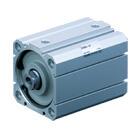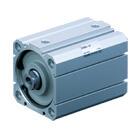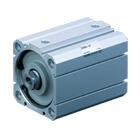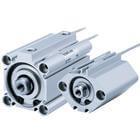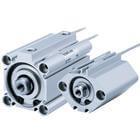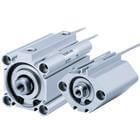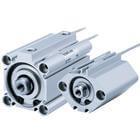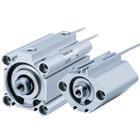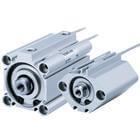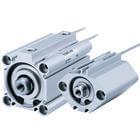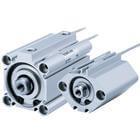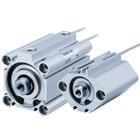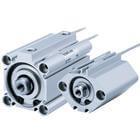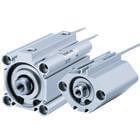SMC Compact air cylinders
- C(D)Q2
- Compact Cylinder
- Double Acting Single Rod Configurator
- C(D)55
- Compact Cylinder ISO Standard (ISO 21287) Configurator
- C(D)55
- Compact Cylinder ISO Standard (ISO 21287) Configurator
- C(D)55
- Compact Cylinder ISO Standard (ISO 21287) Configurator
- C(D)55
- Compact Cylinder ISO Standard (ISO 21287) Configurator
- C(D)55
- Compact Cylinder ISO Standard (ISO 21287) Configurator
- C(D)Q2
- Compact Cylinder
- Double Acting Single Rod Configurator
- C(D)Q2
- Compact Cylinder
- Double Acting Single Rod Configurator
- C(D)Q2
- Compact Cylinder
- Double Acting Single Rod Configurator
- C(D)Q2
- Compact Cylinder
- Double Acting Single Rod Configurator
- C(D)Q2
- Compact Cylinder
- Double Acting Single Rod Configurator
- C(D)Q2
- Compact Cylinder
- Double Acting Single Rod Configurator
- C(D)Q2
- Compact Cylinder
- Double Acting Single Rod Configurator
- C(D)Q2
- Compact Cylinder
- Double Acting Single Rod Configurator
- C(D)Q2
- Compact Cylinder
- Double Acting Single Rod Configurator
- C(D)Q2
- Compact Cylinder
- Double Acting Single Rod Configurator
- C(D)Q2
- Compact Cylinder
- Double Acting Single Rod Configurator
- C(D)Q2
- Compact Cylinder
- Double Acting Single Rod Configurator
- C(D)Q2
- Compact Cylinder
- Double Acting Single Rod Configurator
- C(D)Q2
- Compact Cylinder
- Double Acting Single Rod Configurator
- C(D)Q2
- Compact Cylinder
- Double Acting Single Rod Configurator
- C(D)Q2
- Compact Cylinder
- Double Acting Single Rod Configurator
- C(D)Q2
- Compact Cylinder
- Double Acting Single Rod Configurator
- C(D)Q2
- Compact Cylinder
- Double Acting Single Rod Configurator
- C(D)Q2
- Compact Cylinder
- Double Acting Single Rod Configurator
Now it is difficult to find an industry where compressed air is not used - automatic lines for packaging and dosing dry, liquid, and pasty products, metalworking, woodworking and weaving machines, and many others. Therefore, below we will talk about SMC air cylinders.
Overview of SMC Compact Air Cylinders
SMC compact air cylinders are selected based on their ability to perform a specific task. There are two types of compact pneumatic cylinders: single-acting and double acting.
Single acting cylinders
In single-acting (or single-stroke) cylinders, compressed air (or other working fluid) is supplied to only one side of the piston, while the other side exhausts the air to the outside. The rod (the metal rod that transmits the piston force to the machine) expands or retracts depending on whether air is present inside. The rod extends spring-loaded while the cylinder is filled with air.
A typical single-acting cylinder expands under pressure, where when air is released, an internal spring returns the piston to its original position, commonly referred to as spring return. Single-acting cylinders are the best choice when only one direction of force is required and where the return travel is unhindered and unstressed, as the spring force causes the stem to lengthen. These devices are also standard in places where for safety reasons.
Double acting cylinders
Compressed air (or other fluid) is supplied alternately to both piston sides in a double-acting cylinder. A double-acting cylinder can work on both sides when the working fluid is appropriately balanced and displaced on both sides of the piston. Double rod cylinders are used when it is mechanically advantageous to attach a load to each end or when an additional end can be used to set cams to operate limit switches.
Benefits of using compact air tanks
- Compact pneumatic cylinders provide high performance at low cost.
- They are easily adaptable to a wide range of machines and environments.
- They require less installation space.
- Their installation requires less time and labor.
Applications of SMC Compact Air Cylinders
Although miniature pneumatic cylinders are smaller than other cylinders, they can still be just as powerful. For example, they have a wide range of applications for linear actuation and control.
- Compact single-acting cylinders are used in applications such as transporting material handling equipment to presses.
- In many food processing situations, a conventional cylinder may not be suitable due to a lack of space. Or indoors, it can be challenging to accommodate conventional cylinders due to their design, and even if it fits, it is difficult to get the most out of the cylinder, resulting in reduced productivity and, ultimately, lower profitability. For food processors, minimizing their operating loads without sacrificing capacity, efficiency, or control can make a big difference in their bottom line. Compact cylinders are ideal for light-duty applications. They can be installed in tight spaces and support movements requiring only short strokes as the stem travels over a tiny bearing surface.
- Compact double-acting cylinders are commonly used in assembly, clamping, and other moving/positioning operations.
- The bottling industries also use compact cylinders as they are suitable for rooms with less space.
Considerations for Selecting SMC Compact Air Cylinders
Choosing the suitable small air cylinders SMC for your application involves several considerations to ensure optimum performance and durability. Here are some key factors to keep in mind.
- Clearly define the requirements of your application. Consider factors such as the load to be moved, speed requirements, cycle rate, and desired level of movement accuracy.
- SMC offers many compact pneumatic cylinders, including single-acting and double-acting. Choose the type of cylinder that best suits your application needs.
- Determine the required stroke length (the distance the cylinder should extend and retract). Ensure the selected cylinder's stroke length is suitable for your application.
- The size of the cylinder bore determines the output force. A larger bore provides higher pressure but may also increase overall cylinder size. Select a hole size that balances force requirements and space constraints.
- Consider the operating pressure of your system. SMC cylinders are designed to operate within specific pressure ranges. Ensure the cylinder you choose can handle the force required for your application.
- SMC compact cylinders offer various mounting options, such as foot, flange, or front bow mounting. Choose the appropriate mounting style for your application needs.
- Consider the operating conditions of the cylinder. Factors such as extreme temperatures, moisture exposure, and corrosive substances can affect cylinder performance. Select a cylinder with appropriate seals and materials suitable for the environment.



